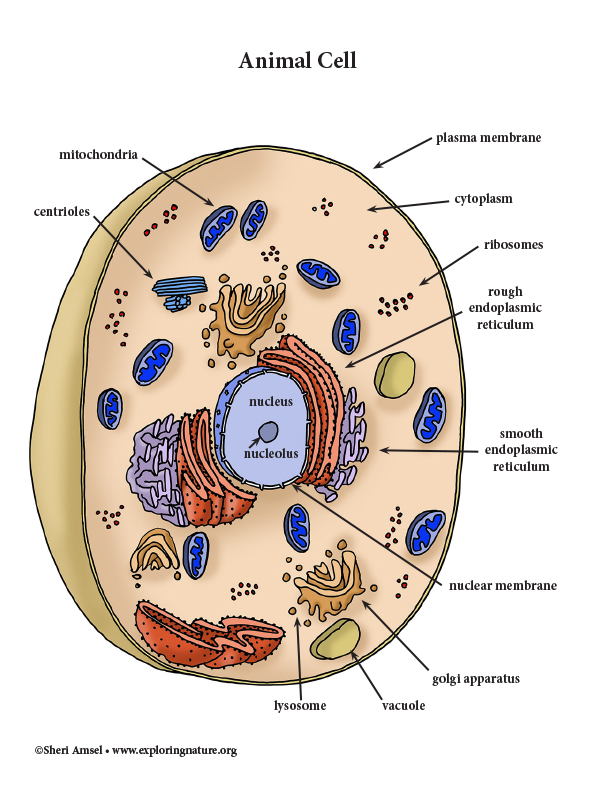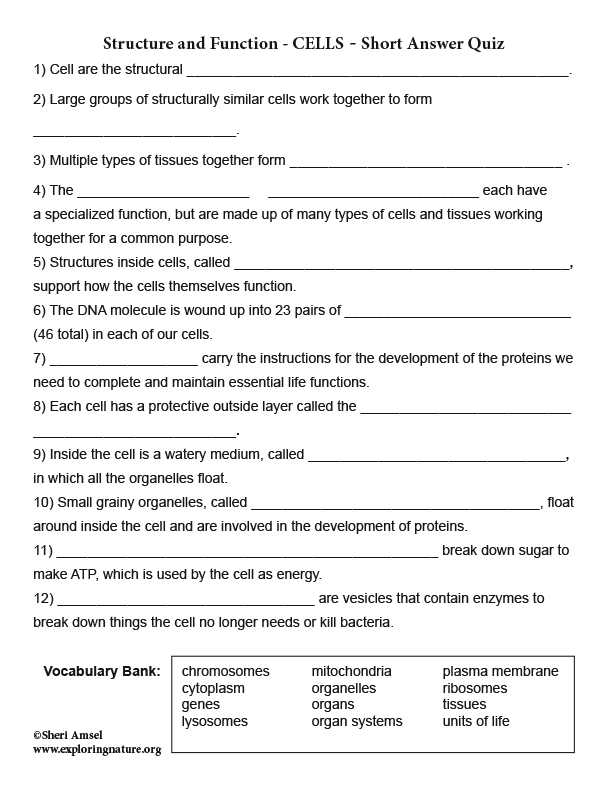

Every living organism is made up of cells – from a unicellular microorganism (e.g. a one-celled organism) to the millions upon millions of multicellular organisms on Earth from ants to elephants. Cells are the structural units of life.
Large groups of structurally similar cells work together to form tissues, e.g. skin tissue, muscle tissue, etc. Multiple types of tissues together form organs and multiple types of organs work together to form functioning organ systems. For example, muscles cells form muscle tissue, which works together with other tissues – epithelial tissue, connective tissue, nervous tissue, etc. to form the heart and blood vessels – the organs – of the circulatory system. The organs systems (respiratory, digestive, nervous, muscular, skeletal, etc.) each have a specialized function, but are made up of many types of cells and tissues working together for a common purpose (respiration, digestion, movement, support, etc.).
Just as cells support the functioning processes of an organism, there are structures inside cells - organelles, which support how the cells themselves function. They power the cell, perform chemical reactions, remove waste and select what can enter and exit the cell. Within the nucleus, cells contain DNA with the genetic information needed to code for the development of proteins. Proteins carry out the necessary jobs that keep the body running smoothly - maintaining homeostasis. The DNA molecule is wound up into 23 pairs of chromosomes (46 total) in each of our cells. On each chromosome is a number of genes which carry the instructions for the development of the proteins we need to complete and maintain essential life functions.
Each cell has a protective outside layer called the plasma membrane which lets certain things into the cell that it needs, but keeps other things out. This is called semipermeable. Inside the cell is a watery medium, called cytoplasm, in which all the organelles float. Small grainy organelles, called ribosomes, float around inside the cell and are involved in the development of proteins. Mitochondria break down sugar to make ATP, which is used by the cell as energy. Lysosomes are vesicles that contain enzymes to break down things the cell no longer needs or kill bacteria.
Studying the organelles and their functions is part of the information building blocks you will need to study biology and anatomy.
When you research information you must cite the reference. Citing for websites is different from citing from books, magazines and periodicals. The style of citing shown here is from the MLA Style Citations (Modern Language Association).
When citing a WEBSITE the general format is as follows.
Author Last Name, First Name(s). "Title: Subtitle of Part of Web Page, if appropriate." Title: Subtitle: Section of Page if appropriate. Sponsoring/Publishing Agency, If Given. Additional significant descriptive information. Date of Electronic Publication or other Date, such as Last Updated. Day Month Year of access < URL >.
Amsel, Sheri. "Cells - Structure and Function (6-8 NGSS)" Exploring Nature Educational Resource ©2005-2024. December 15, 2024
< http://www.exploringnature.org/db/view/Cells-Structure-and-Function >

